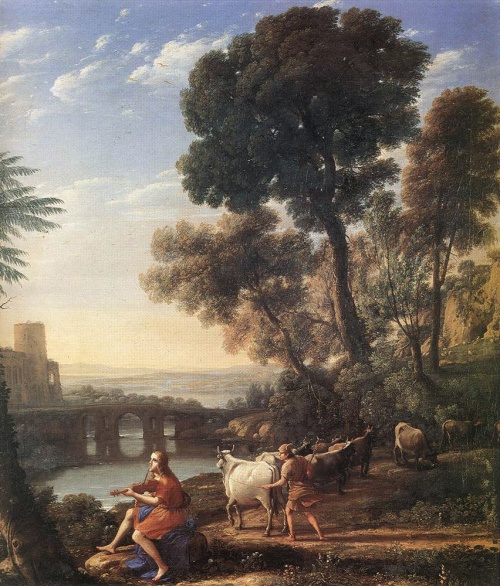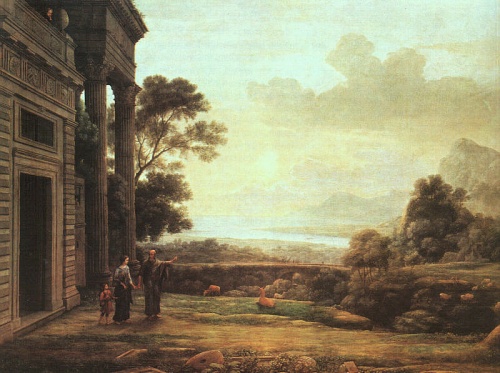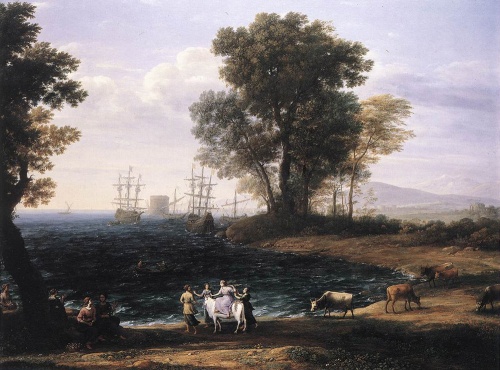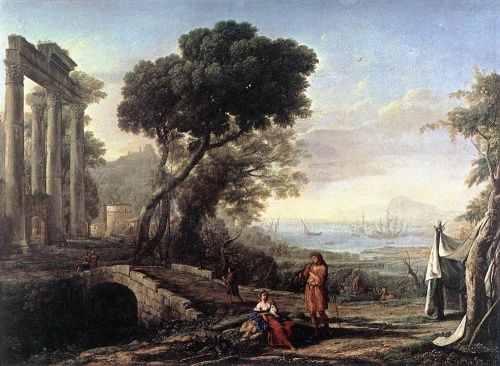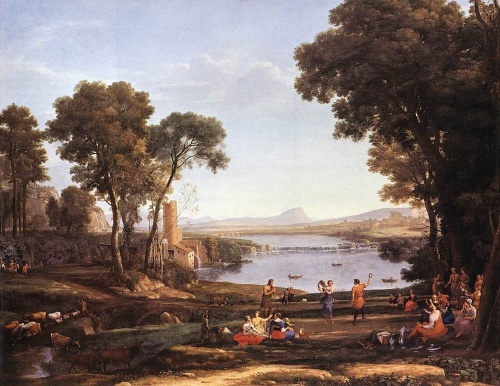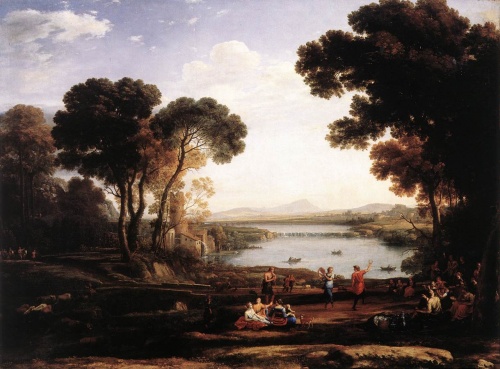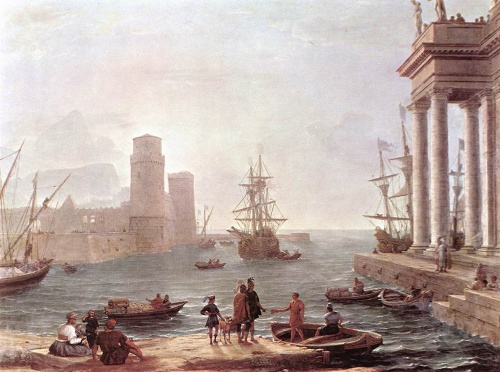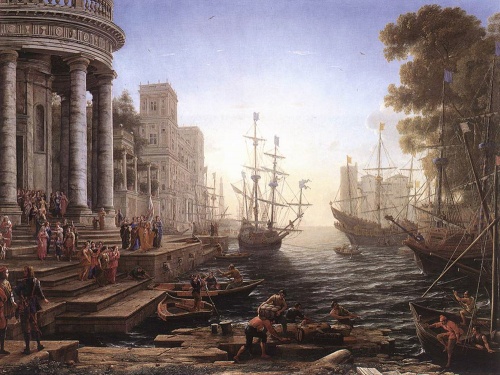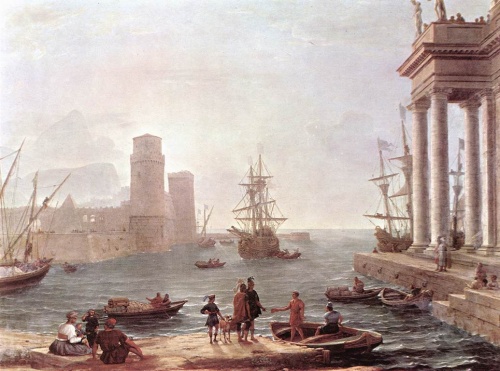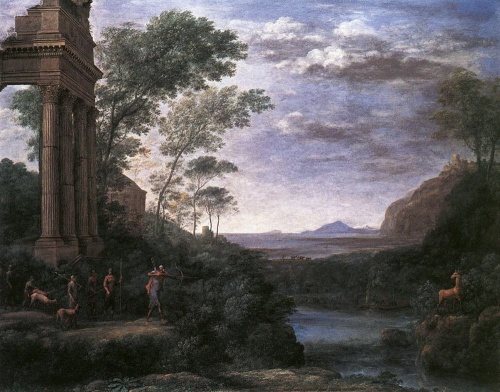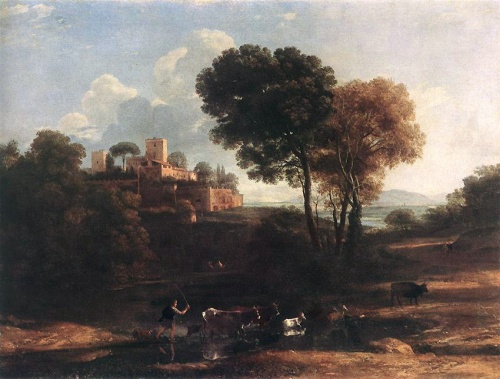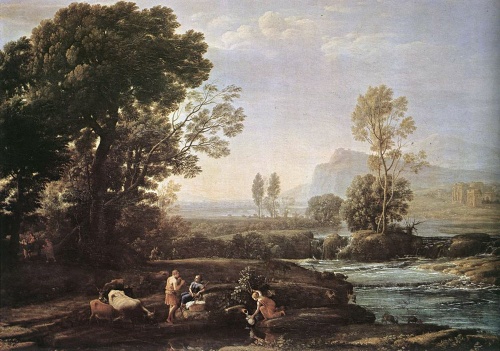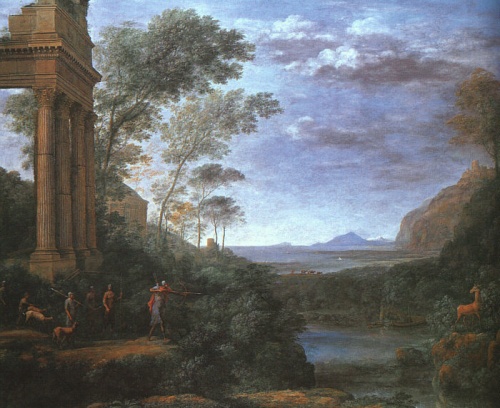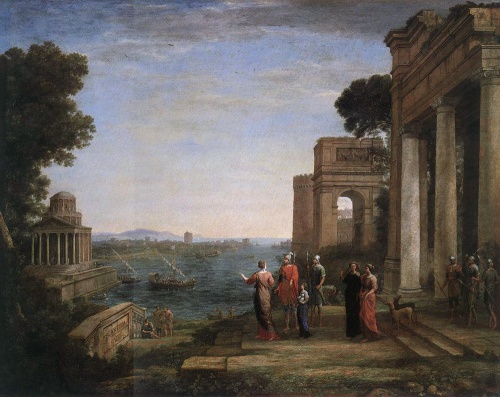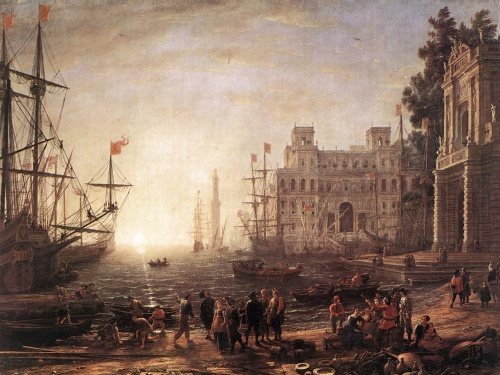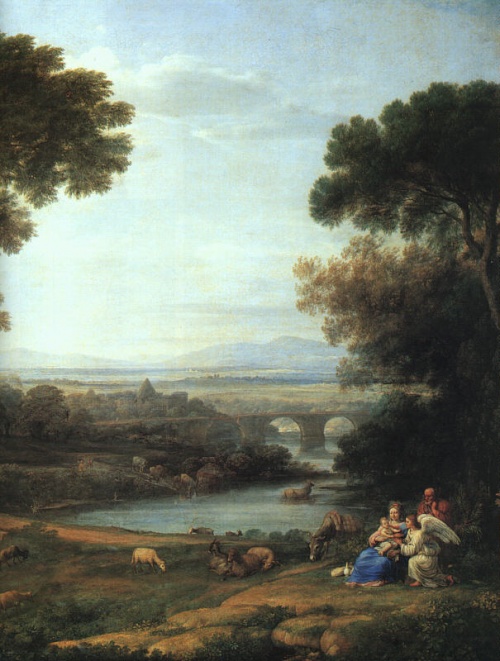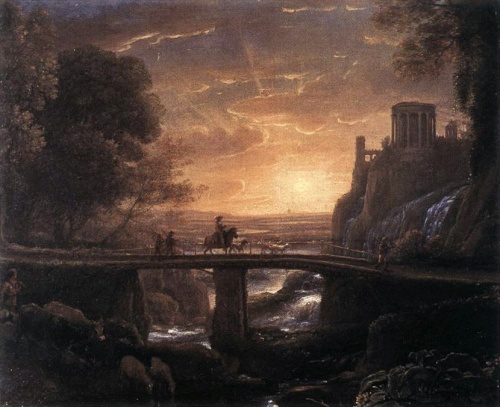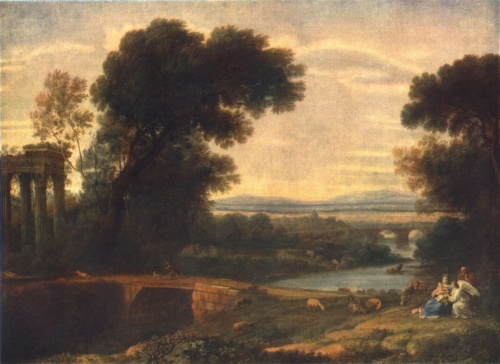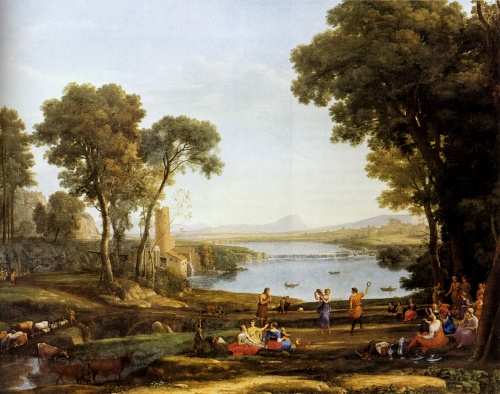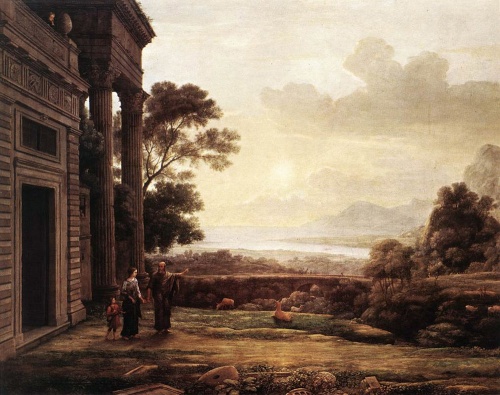Claude Lorrain (Claude Gellee or Le Lorrain)(1600-1682) (57 works)
Разрешение картинок от 600x451px до 1219x901px
Having received initial knowledge of drawing from his elder brother, a skilled wood engraver in Freiburg, in Breisgau, he went with one of his relatives to Italy; studied perspective and architecture with G. Wels in Naples, and improved in landscape painting under the guidance of Agostino Tassi, one of P. Briel’s students, in Rome, where after that Lorrain’s entire life was spent, with the exception of two years (1625-27) spent in France.
In his landscapes, conceived and executed in a sublime classical style, Lorrain strove not so much for an accurate detailed rendering of nature, but rather for the expression of the poetic feeling aroused by it, he tried to impress with the beauty of lines, the balance of the depicted masses, a clear gradation of tones in close and distant plans, spectacular contrast of light and shadow, without, however, violating the essential conditions of truth.
With great skill, the artist depicted the play of the sun's rays at various times of the day, the freshness of the morning, the midday heat, the melancholic flicker of twilight, the cool shadows of warm nights, the shine of calm or slightly swaying waters, the transparency of clean air and the distance covered with light fog. In his work one can distinguish two manners: paintings dating back to the early period of his activity are painted strongly, thickly, in warm colors; later ones are painted more smoothly, in a coldish tone. The figures with which his landscapes are usually animated belong, mainly, not to his brush, but to his friends — F. Lauri, I. Mile, Fr. Allegri and N. Colonbel.
Lorrain's paintings are available in almost all major galleries in Europe. There are especially many of them in public and private collections in England, the Louvre, Palazzo Doria in Rome, the Munich Pinakothek, the Dresden Gallery and the Hermitage in St. Petersburg; the latter contains 12 paintings, including “The Four Seasons,” perhaps the most remarkable of all the artist’s works.
Driven by the desire to retain the memory of the paintings that came out of his studio, or, perhaps, in order to have documents to expose the many speculators who stole his subjects and forged his painting style, Lorrain reproduced most of his landscapes in drawings drawn with a pen and passed through bistre , and compiled a collection of such sketches under the title: “Liber veritatis” - “Book of Truth” (200 drawings; located by the Duke of Devonshire, in England). This collection was subsequently (in 1774) published in facsimile engravings by R. Irlom. Having excellent command of the engraving needle, in 1630-1662 Lorrain himself executed forty-six engravings from his paintings.
A native of the then independent Duchy of Lorraine, the artist lived most of his life in Italy.
The peasant family into which Claude was born was quite prosperous, but the boy was left an orphan early; according to some sources, in 1613-14. he ended up in Rome. Not knowing Italian, he hired himself as a servant in the house of the landscape artist Agostino Tassi. Tassi was his first teacher - helping the landscape painter, Claude learned some technical techniques and skills. From 1617 to 1621, Lorrain lived in Naples and studied with another artist , German Gottfried Waltz. Between 1622 and 1625 Lorrain lived in Rome and worked as an assistant to Tassi.
In 1625, Lorrain returned to his homeland and lived in Nancy until 1627. It is known that he decorated the church vault and painted architectural backgrounds in commissioned works by Claude Deruet, court painter of the Duke of Lorraine. Unsatisfied, Lorrain again left for Italy and settled in Rome. There he lives until his death (1627-1682). At first he carried out custom decorative work, i.e. n. “landscape frescoes”, but later he managed to become a professional “landscape painter” and concentrate on easel works. In addition, Lorrain was an excellent etcher; He left etching only in 1642, finally choosing painting.
In 1637, the French ambassador to the Vatican bought two paintings from Lorrain, which are now in the Louvre: “View of the Roman Forum” and “View of the port with the Capitol.”
In 1639, the Spanish king Philip IV commissioned Lorren seven works (now in the Prado Museum), of which two were landscapes with hermits.
Among other customers, it is necessary to mention Pope Urban VIII (4 works), Cardinal Bentivoglio, Prince Colonna.
In 1644, Lorrain began "Liber veritatis", a kind of catalog where he draws each of his paintings and notes the name of the owner. This handwritten book included 195 works by the artist; The book is currently kept in the British Museum in London.
One of the master's teachers was Jean Lagrene Sr.
During the Baroque era, landscape was considered a secondary genre. Lorrain, however, receives recognition and lives in abundance. He rents a large, three-story house in the center of the capital, not far from the Plaza de España (since 1650); since 1634 he has been a member of the Academy of St. Luke (i.e., the Art Academy). Later, in 1650, he was offered to become the rector of this Academy, an honor Lorrain refuses, preferring quiet work. He communicates with artists, in particular with N. Poussin, a neighbor whom he visits often in the 1660s to share a glass of good red wine with him.
In recent decades (1660–80), Lorrain worked more slowly
Yes, but always with success. The Hermitage’s “Times of Day” belong to this period. In his later works, Lorrain paints the figures himself. He places them in imaginary buildings; thematically - these are free interpretations of Roman poets, especially Ovid and Virgil: “View of the shore of Delos with Aeneas”, 1672 (National Gallery, London), “Parnassus” (Museum of Fine Arts, Boston).
Lorrain’s last work, “Landscape with Oskanius Shooting a Deer” (Museum in Oxford), was completed in the year of the artist’s death, and is considered a true masterpiece. Lorrain was not married, but had a daughter, Agnes, born in 1653. To her he bequeathed all his property - including a harpsichord, a press for printing engravings and "Liber veritatis". Lorrain died in Rome in 1682.
Evolution: At first, Lorrain painted small works with pastoral figures on canvas or copper; then - ports, with the setting sun. Over time, under the influence of classical artists, his compositions become increasingly larger-scale, with literary subjects (Lorrain himself did not receive any special education - he was self-taught; however, he read and wrote in French and Italian). In the later period, the artist’s works become more and more intimate in nature and are distinguished by a very delicate texture (often these are episodes of Virgil’s “Aeneid”).
Lorrain, unlike Poussin, went beyond the academic landscape. Light is always important in his works. He is the first to study the problem of solar lighting, morning and evening; the first to be seriously interested in the atmosphere, its light saturation. His works influenced the development of European landscape, in particular, William Turner (early 19th century).

